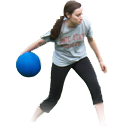
How Many HIIT Workouts Should You Do a Week?
HIIT, or high-intensity interval training, is having a moment — a very, very long moment. With HIIT-specific fitness studios popping up left and right (and experts constantly raving about the benefits of the afterburn), it’s easy to feel like you should be doing HIIT all the time.
How often can your body handle this all-out type of workout, though? Probably less often than you think.
FIRST THING FIRST: WHAT COUNTS AS HIIT?
Let’s break that down: On a scale of 1–10, your average run or cardio session might involve a steady effort of about a 5 or a 6. In a HIIT workout, though, you’ll alternate between intervals of pushing at an effort level of 7 or higher and intervals of recovering at a minimal effort level.
Just how long your work and rest intervals last, and whether you run your intervals on a track or step them out on the stairclimber, though, is totally up to you. According to the American Council on Exercise, work intervals typically last between 30 seconds and 3 minutes, with rest intervals lasting equally as long — if not longer. (Because of these high-intensity efforts, most HIIT workouts last just about 20 minutes or so.)
The benefit of pushing through a HIIT session instead of doing your usual cardio? You burn more calories and fat — and in less time.
GENERALLY, HOW MANY HIIT WORKOUTS CAN YOU DO PER WEEK?
Given the serious bang-for-your-buck HIIT workouts offer, you’re not the only exerciser tempted to swap them in for every cardio session you do.
The thing is, “if you are truly doing HIIT correctly, you are putting significant stress on your cardiovascular and musculoskeletal systems,” says Holland. For that reason, you can’t do it every day.
Though just how many HIIT workouts a week you can handle varies based on your current fitness level and goals, it’s generally a good rule of thumb to have at least one day of low-intensity exercise between two HIIT days, says Holland.
Sticking to that guideline means you can consistently churn out three or four HIIT workouts per week, tops. “Even professional athletes generally perform at least one, if not two, easy workouts for every hard session like HIIT,” Holland adds.
If you’re a complete HIIT newbie, though, the American Council on Exercise recommends you start with just one or two sessions per week for about six weeks.
WHY MORE HIIT ISN’T ALWAYS BETTER
“Doing these workouts every day can lead to overtraining syndrome and injury,” Holland says. (Overtraining syndrome is basically a state in which you feel constantly fatigued and perform poorly in the gym as a result of too much exercise.)
“No matter how effective a form of training is, if you do too much, you will experience problems,” Holland adds. “This is especially true of higher-intensity workouts.”
TELLTALE SIGNS YOU’RE DOING TOO MUCH HIIT
First of all, if you’re attempting to do HIIT every day (or almost every day), keep Holland’s philosophy in mind: “If you can do HIIT every day, you’re not doing it right.”
However, even if you’re sticking to three or so sessions per week, look out for overtraining symptoms like trouble sleeping, a higher-than-usual resting heart rate, irritability, excessive soreness and poor performance, all of which indicate a need to dial it back.
If you need to slow your roll with the HIIT, don’t sweat it. LISS (lower-intensity steady-state cardio) still has a valid place in your routine, too. Lower-intensity workouts not only offer weight loss and heart-health benefits, but they can be a much-needed reprieve from the all-out mentality of modern life. In fact, during low-intensity exercise, you recover while you move, which makes it a must-do for anyone who wants to stay active and reap HIIT’s benefits.





